RARE! WWII 1942 U.S. Navy Combat “RESTRICTED” Office of Naval Intelligence Axis Submarine German U-Boat - Japanese - Axis French Submarines Identification Poster (LARGE SIZE)*

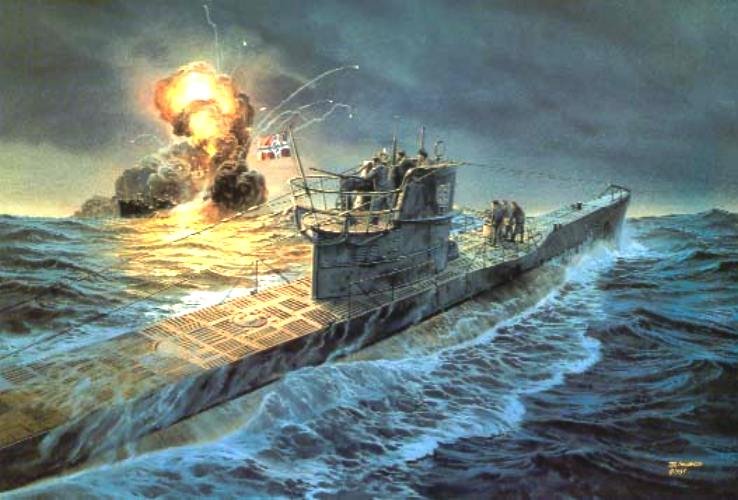


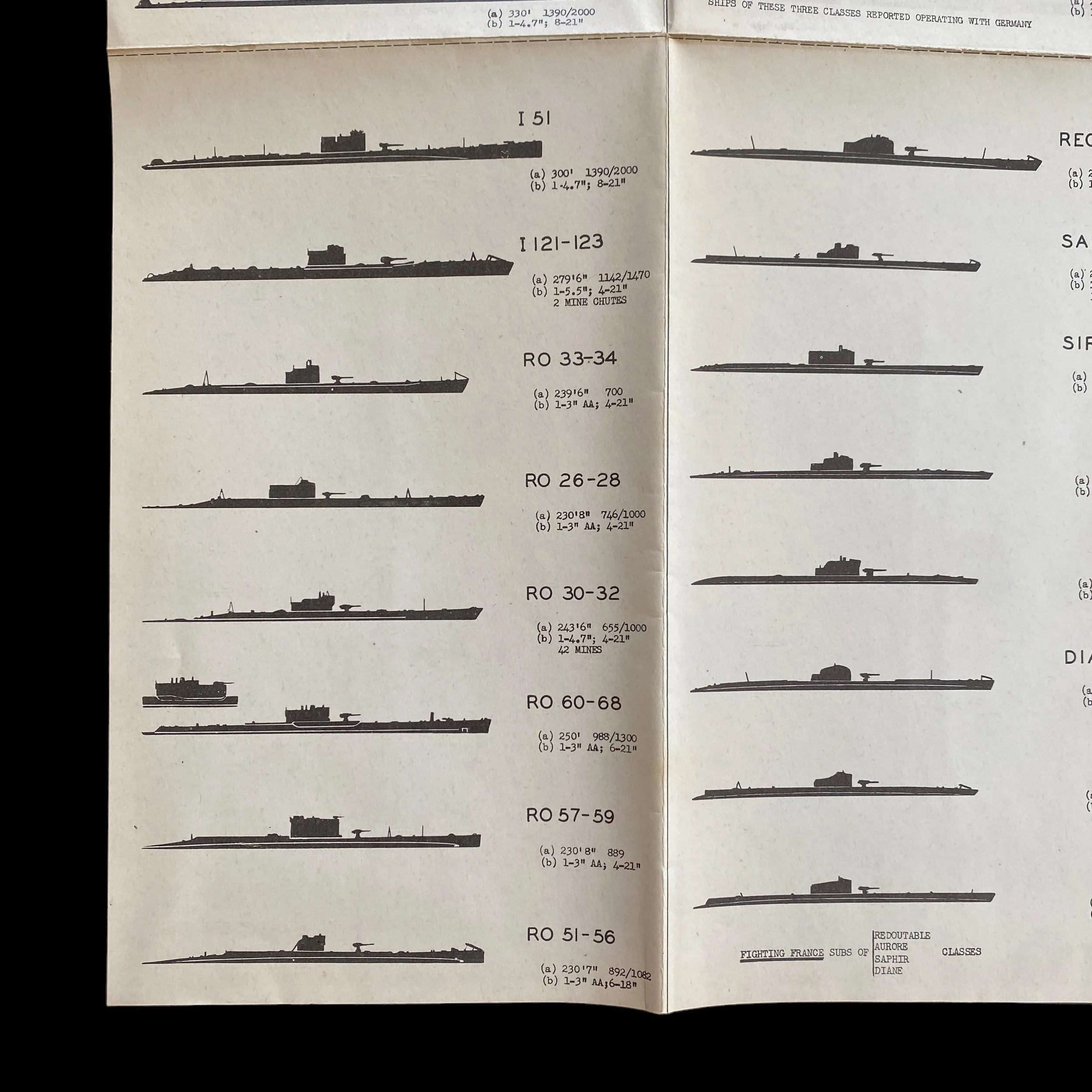


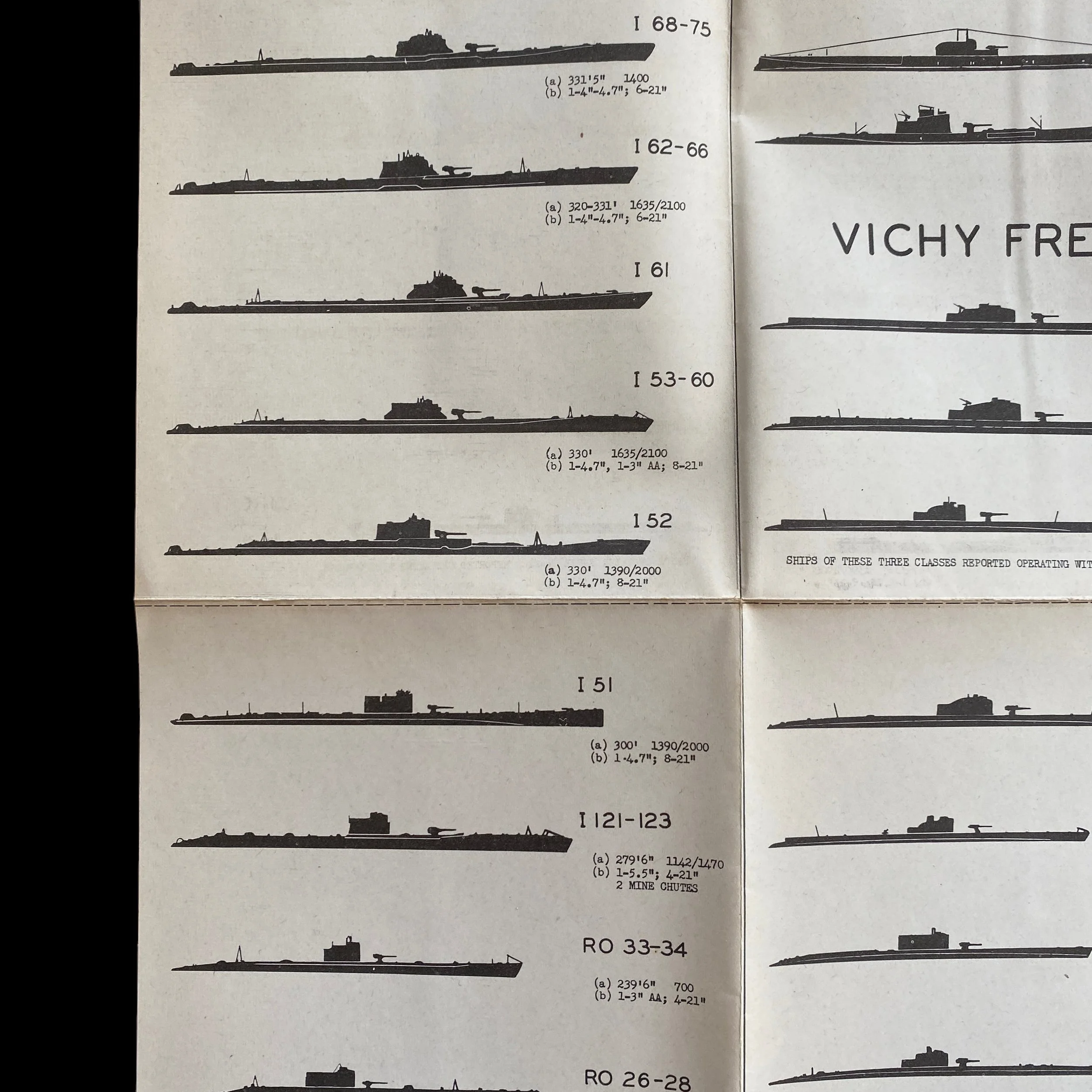


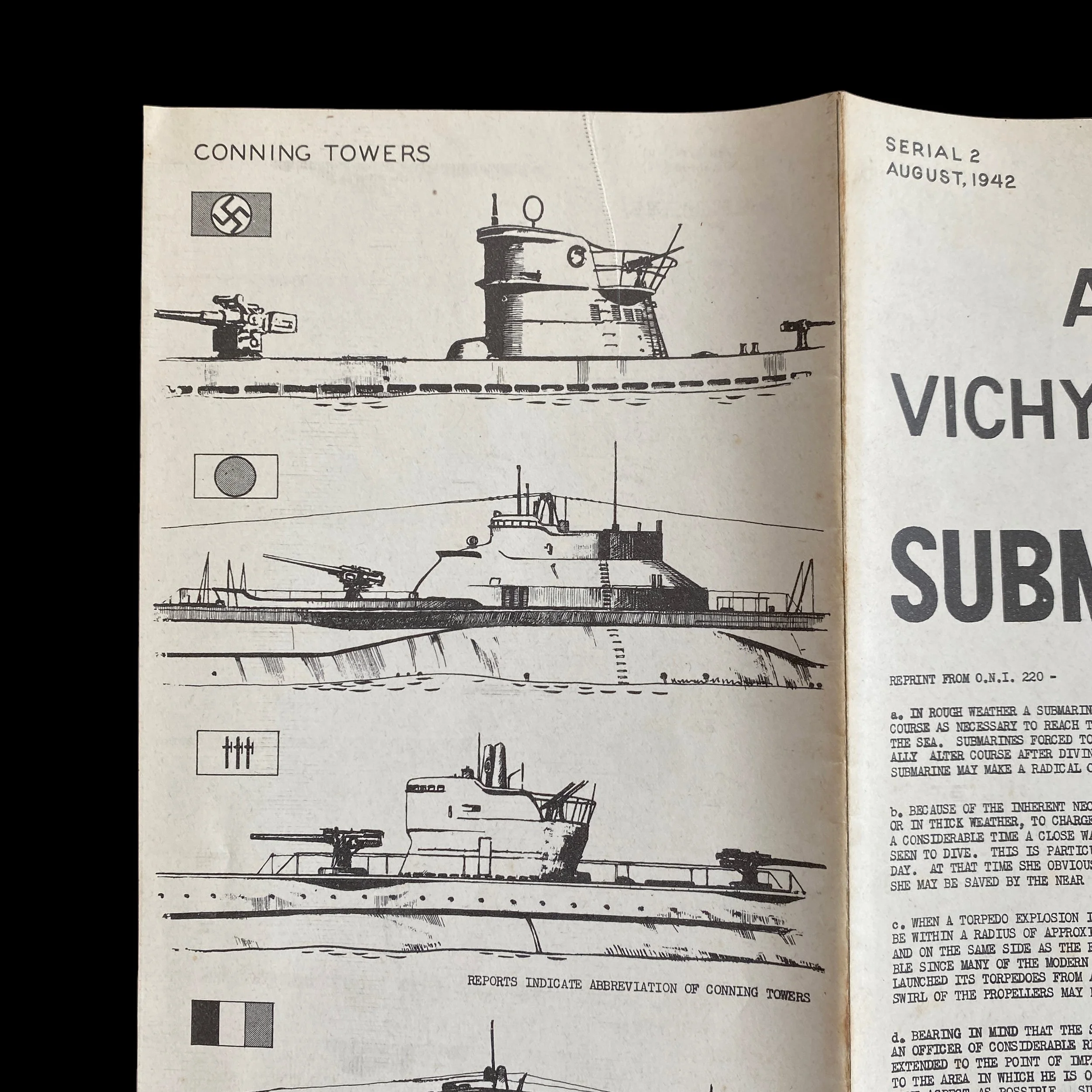
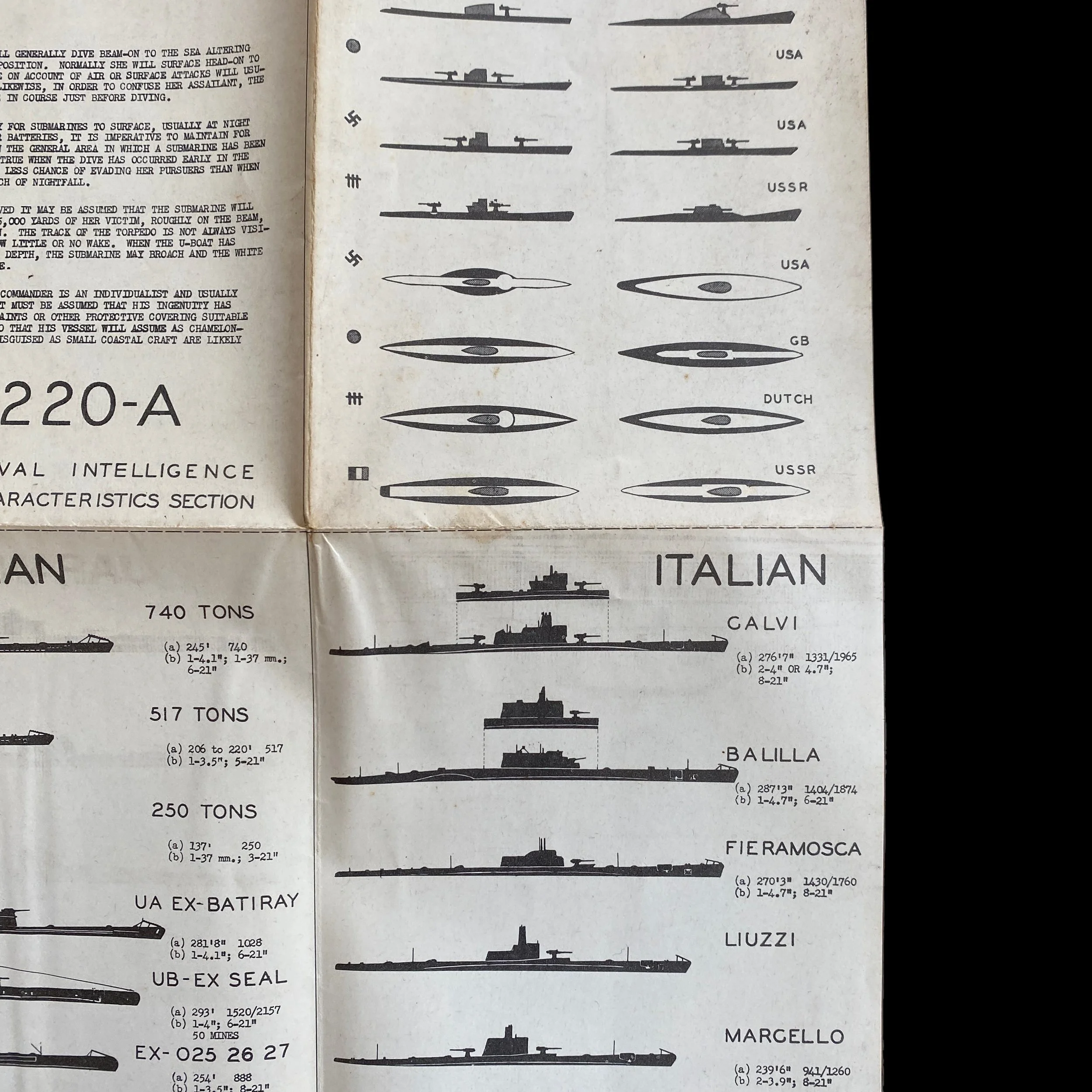










RARE! WWII 1942 U.S. Navy Combat “RESTRICTED” Office of Naval Intelligence Axis Submarine German U-Boat - Japanese - Axis French Submarines Identification Poster (LARGE SIZE)*
Comes with hand-signed C.O.A.
Size: 24 x 14 inches
This poster, bearing the combat designation "RESTRICTED," was vital during the tumultuous times of World War II, particularly amidst the intense and perilous encounters in both the European and Pacific Theaters. Its inception coincided with the critical need for accurate intelligence as SECRET and CONFIDENTIAL military maps and documents were actively employed in combat operations. Central to its purpose was the inclusion of meticulously detailed silhouette and identification guides, meticulously designed to distinguish Enemy/Axis submarines—including German U-boats, Japanese submarines, and those of the Axis-aligned French.
The significance of this poster transcends mere informational utility; it was an indispensable tool in the arsenal of Allied forces. The weathered and worn condition of the poster speaks volumes about its extensive use in the field, bearing silent testimony to its role in countless missions and its exposure to the harsh realities of wartime environments. It served not only as a reference but as a crucial element in the strategic planning and execution of naval operations, where the ability to accurately identify hostile vessels could decisively influence the outcome of engagements.
The study and application of this chart often meant the difference between life and death. In the high-stakes theater of naval warfare, where split-second decisions based on the accurate identification of enemy submarines were paramount, this poster provided a lifeline. It enabled Allied personnel to swiftly recognize and differentiate between the silhouettes of Axis submarines, a skill that was essential for effective countermeasures and evasive actions.
World War II ship identification posters, and specifically those designed for the recognition of Axis submarines, were more than mere tools; they were critical educational resources. These posters were strategically developed to enhance the observational skills of crew members, empowering them to make informed decisions based on the visual characteristics of enemy vessels. In the vast and unforgiving expanses of the European and Pacific oceans, where the enemy lurked beneath the waves, these posters were a beacon of clarity amidst the fog of war.
In the European Theater, these posters helped safeguard vital supply routes from the lethal threat of German U-boats, infamous for their wolf-pack tactics. In the Pacific, identifying Japanese submarines was crucial for protecting naval fleets and supporting amphibious operations on islands scattered across the ocean. Each theater presented unique challenges and adversaries, and the posters were adapted to meet these specific needs, offering a tailored resource that contributed significantly to the Allied naval strategy.
The legacy of these identification posters is a testament to the ingenuity and adaptability of Allied forces in leveraging available intelligence and technology against the Axis powers. They exemplify the meticulous planning and resourcefulness that were hallmarks of Allied success in World War II, serving as enduring symbols of the relentless pursuit of victory in the face of adversity.
Submarine Warfare in World War II: A Comparative Analysis of German, Japanese, and French Operations:
World War II was a global conflict that saw extensive use of submarines, marking a significant evolution in naval warfare. The Axis powers, notably Germany, Japan, and to a lesser extent, Vichy France, deployed submarines with strategic aims that varied across theaters. This essay explores the operations and missions of German U-boats in the European theater, Japanese submarines in the Pacific, and the lesser-known role of French submarines, providing a comprehensive overview of submarine warfare during the conflict.
German U-boat Campaign in the European Theater
Germany's submarine fleet, or U-boats, was a cornerstone of its naval strategy during World War II, primarily aimed at disrupting Allied shipping lines. The U-boat campaign was divided into several phases, reflecting the evolving nature of the war and advancements in anti-submarine warfare.
Early War Successes and the Happy Time
At the war's outset, U-boats enjoyed significant success, exploiting the element of surprise and the initial lack of effective Allied convoy systems. This period, known as the "Happy Time," saw substantial losses of Allied merchant shipping. German U-boats, operating under the principles of the "Rudeltaktik" or wolfpack tactics, would converge on convoys, overwhelming their escorts. The primary objective was to sever the Atlantic supply lines that were vital for Britain's survival.
The Battle of the Atlantic
The Battle of the Atlantic was the longest continuous military campaign of World War II, stretching from 1939 to 1945. It was here that the U-boats sought to enforce a blockade, starving the United Kingdom of essential supplies and military equipment. However, the tide began to turn with the introduction of improved Allied convoy tactics, better anti-submarine warfare (ASW) technology such as sonar and radar, and the breaking of German naval codes by Allied cryptographers. These developments, combined with the increased production of Allied escort vessels and aircraft, gradually diminished the U-boat threat.
The Final Years
Despite innovative tactics and the introduction of new technologies like the snorkel (which allowed submarines to operate submerged for longer periods) and the Type XXI "Electro" U-boat (a true submarine capable of sustained underwater operation), Germany could not overcome the Allies' technological and numerical superiority. The final years of the war saw the U-boat fleet suffering heavy losses, culminating in its virtual annihilation by 1945.
Japanese Submarine Operations in the Pacific Theater
Japan's use of submarines during World War II differed markedly from Germany's. While the Germans focused on commerce raiding, the Japanese Imperial Navy envisioned its submarines primarily as scouts and as spearheads in fleet battles against the United States Navy. Japanese submarines were technologically advanced, with some classes possessing the longest range and largest sizes of the conflict, yet their strategic employment was often flawed.
Early Strategic Missteps
Japanese submarines achieved notable successes early in the war, including the sinking of two British warships, HMS Prince of Wales and HMS Repulse. However, their potential was hampered by a doctrine that emphasized attacks on enemy warships over merchant vessels, failing to disrupt the Allies' logistical support effectively.
Special Operations and Technological Innovation
Japanese submarines conducted a range of special operations, from supplying isolated island garrisons to launching aircraft for reconnaissance and bombing missions against the U.S. mainland. The I-400 class submarines, capable of carrying three aircraft, exemplified Japan's innovative approach. Yet, these operations had little strategic impact on the war's outcome.
Limited Impact
Despite their technological sophistication, Japanese submarines had a limited effect on the overall course of the Pacific War. Their failure to target Allied supply lines effectively, combined with the overwhelming industrial and numerical superiority of the Allies, rendered Japanese submarine operations less effective than those of their German counterparts.
Axis French Submarine Operations
The contribution of French submarines to Axis efforts in World War II is often overlooked. Following the fall of France in 1940, the Vichy French navy operated a number of submarines. These vessels saw limited action, primarily in the Mediterranean, conducting patrols and occasionally engaging Allied shipping. However, the scuttling of the French fleet at Toulon in 1942, to prevent its capture by the Germans, effectively ended significant French submarine operations on the Axis side.
The use of submarines by Germany, Japan, and France during World War II demonstrates the diversity of strategic thought and operational execution in submarine warfare. German U-boats, with their focus on commerce raiding, represented the most sustained and threatening submarine campaign of the war, nearly altering its course during the Battle of the Atlantic. In contrast, Japanese submarines, despite their advanced technology, were hampered by strategic misapplications, failing to significantly impact the Allied logistical network in the Pacific. Meanwhile, French submarines played a marginal role, their potential curtailed by the early capitulation of France and the subsequent scuttling of its fleet. Collectively, these submarine operations reflect the broader complexities and varied outcomes of naval warfare during World War II, highlighting both the potential and limitations of submarines as strategic tools in a global conflict.